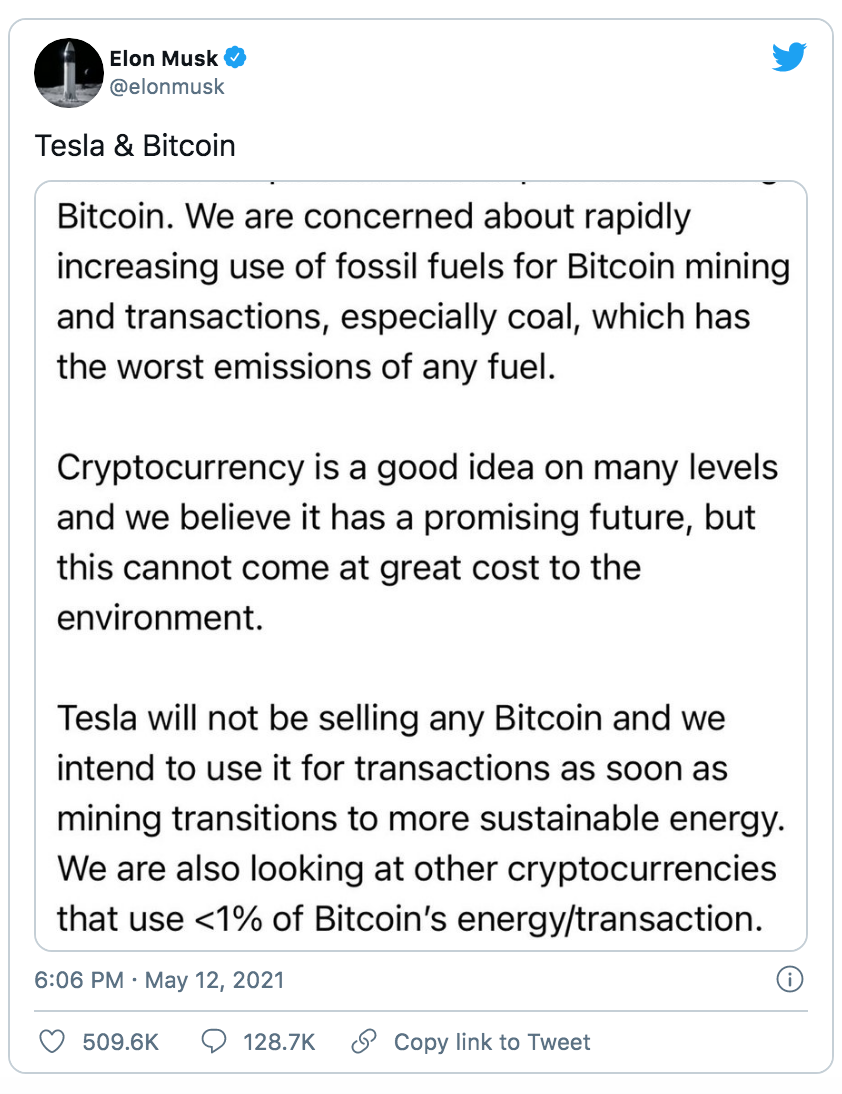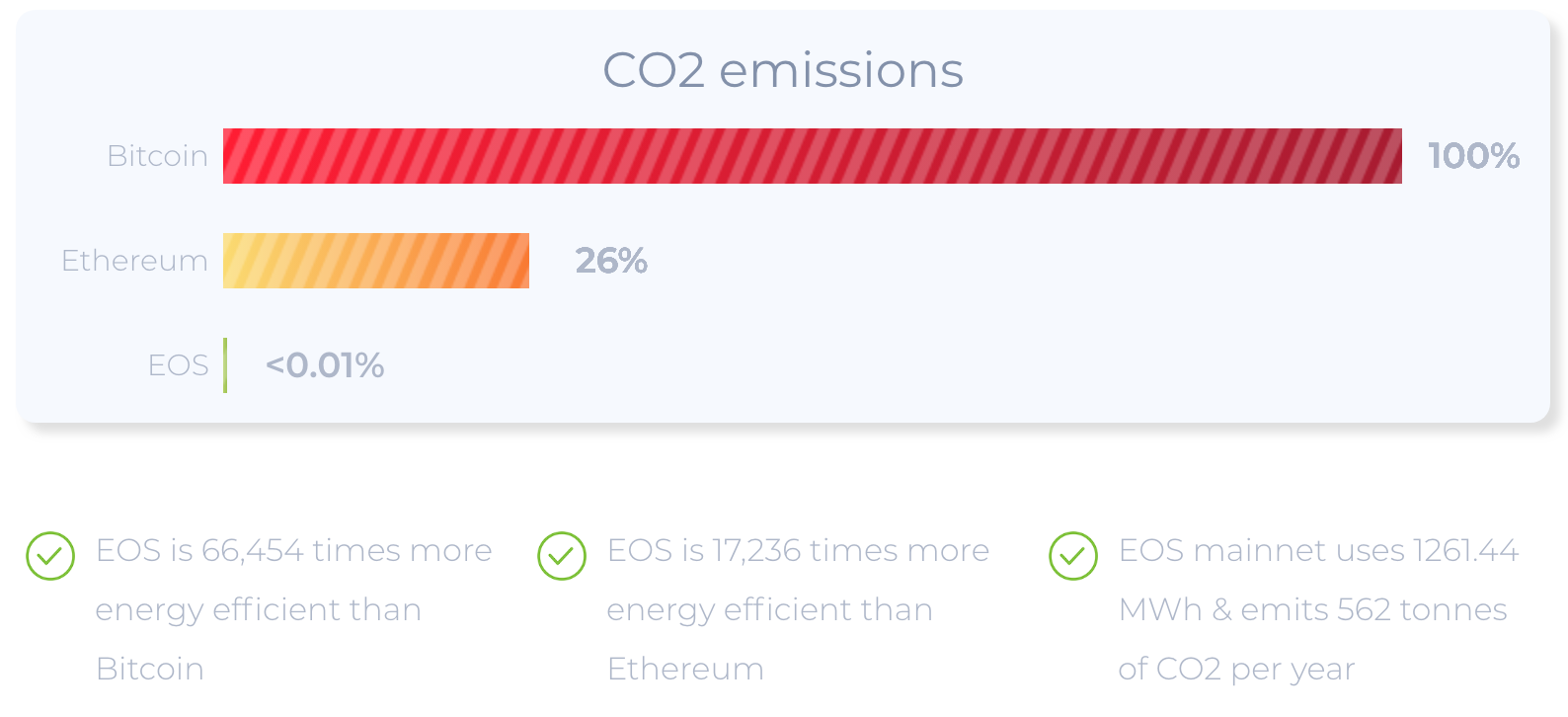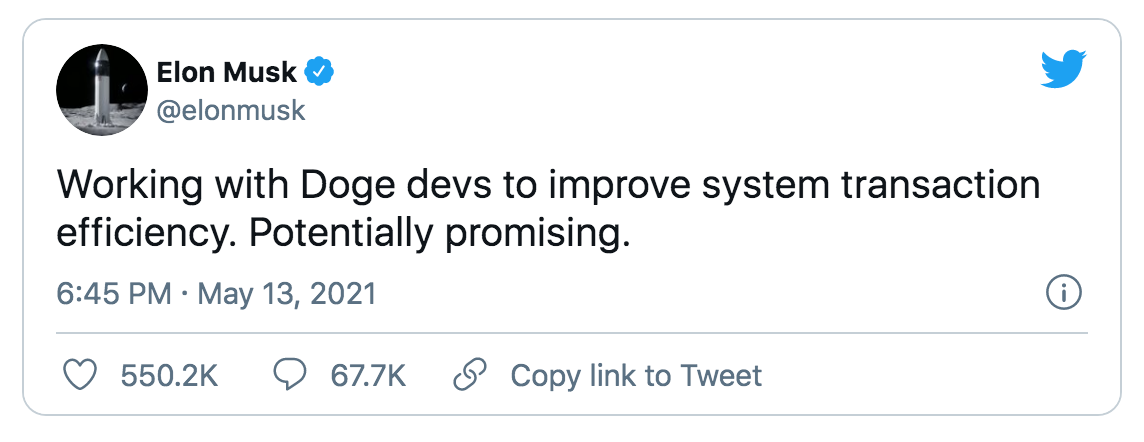Over the past few weeks, significant attention has been drawn to the environmental impact of Bitcoin and other cryptocurrencies. One of the many causes of this environmental exposure and movement was driven by a tweet by Elon Musk. Musk stated that Tesla would not accept Bitcoin any longer and the company would hold onto the crypto asset until environmental consequences of Bitcoin ameliorate. Additionally Musk tweeted, “To be clear, I strongly believe in crypto, but it can’t drive a massive increase in fossil fuel use, especially coal.” Another related quote of his is illustrated below:

Many believe that Bitcoin is bad for the environment. The cryptocurrency requires vast amounts of energy to run, which is mostly powered by coal. Furthermore, Bitcoin relies on a Proof of Work consensus mechanism. This is a system that rewards one computer every time a block is produced or mined and involves a large amount of calculations. In order to mine the next block, the other computers have to start over. Essentially, the energy used in the last attempted block mined goes to waste as the previous block energy cannot be transferred to the next. According to Digiconomist, the whole Bitcoin mining network’s energy consumption has a carbon footprint similar to that of Portugal.
Currencies that use a Proof of Storage, Proof of Stake, or block lattice consume far less energy. Although there is no one coin that is greener than the others, there are many coins that are exceptionally greener than Bitcoin. Some of the these “green” coins include:
Algorand (ALGO)
- This cryptocurrency is a proof-of-stake blockchain that gets its value from supporting smart contracts. It’s blockchain is scalable and secure, and it uses minimal energy as it does not involve mining. The network is trying to be a leader in sustainability by building a carbon-negative network.
BitGreen (BITG)
- This coin was founded as a response to the environmental impact of Bitcoin. It uses a governance-funded protocol and is an energy-efficient alternative to Proof of Work consensus cryptocurrencies. The coin incentivizes eco-friendly actions, as users are able to earn BITG by participating in environmentally friendly activities.
Cardano (ADA)
- This coin was developed by the co-founder of Ethereum, Charles Hoskinson. This coin was tested as the world’s first peer-reviewed blockchain. The cryptocurrency is more efficient than Bitcoin, as it uses a proof of stake consensus.
Chia (XCH)
- This cryptocurrency uses a “proof of space and time” model that allots storage space on a computer’s hard drive for the network to run. This enables a miner to mine coins on an individual computer using spare space, which is energy efficient.
EOSIO (EOS)
- EOS is a public blockchain that is highly scalable and is uncomplicated to set up and write applications in several programming languages. EOS is the world’s first major carbon-neutral blockchain.

Nano
- This cryptocurrency facilitates fee-free cryptocurrency transactions and uses block lattice technology, which is energy efficient.
Polkadot (DOT)
- This cryptocurrency is a multi-chain network that bridges the gap between blockchains and uses a proof-of-stake model. The proof of stake model holds coins within the network, in controversy to mining for coins, which requires significant energy use.
SolarCoin (SLR)
- SolarCoin is global, decentralized, and aims to incentivize verifiably produced solar energy.
Stellar (XLM)
- This cryptocurrency is bridging the gap between traditional financial institutions and digital currencies. Stellar is seen as an alternative to PayPal as it enables quicker, easier, and cost-effective cross-asset and cross-border transactions and exchanges. Through the Stellar network, Lumens are used to expedite trades on the blockchain efficiently, with a lower carbon footprint.
TRON (TRX)
- TRON is a non-profit organization and public blockchain that supports many programming languages and is energy efficient. It is a peer-to-peer platform and allows creators to share applications directly on the blockchain.
The following chart provides an illustration of energy usage:

As more attention is drawn to the environmental impact of Bitcoin and other cryptocurrencies, more efforts will be made to minimize carbon footprints in an effort to be a top competitor and draw in investors. Investors have started to favor greener cryptocurrencies and the movement has just begun. It is said that Bitcoin will lead to an energy revolution.
One of the obstacles of building and using green energy sources for mining is the cost of infrastructure. Although the cost may be a deterrent, the cost to the environment is paramount.
Many investors and developers are running to fund, alter, and/or create more sustainable cryptocurrencies. Tesla CEO, Elon Musk is currently working to make Dogecoin more environmentally sustainable.

Additionally, the Ethereum Foundation, which supports research and development behind the blockchain, states that the currency is going to become more sustainable. The foundation states that Ethereum will soon be 99.95% more environmentally friendly with the coming of Ethereum 2.0.
There is hope on the horizon, as cryptocurrencies are making efforts to become greener. Within the next decade, cryptocurrencies will be significantly more sustainable. It’s going to be a race to be green. Until then, #ToTheMoon!
Sources:
https://www.leafscore.com/blog/the-9-most-sustainable-cryptocurrencies-for-2021/
https://www.tomsguide.com/news/5-bitcoin-alternatives-that-are-more-environmentally-friendly
https://www.trgdatacenters.com/most-environment-friendly-cryptocurrencies/
https://www.cryptovantage.com/news/the-top-5-environmentally-oriented-crypto-coins/
https://www.businessinsider.com/elon-musk-dogecoin-developers-environmentally-friendly-2021-5

